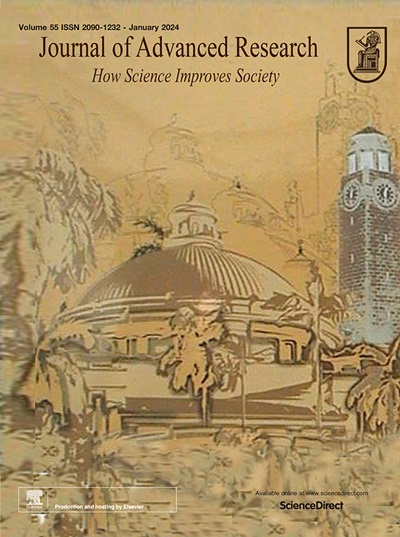Urinary proteins from stone formers promote calcium oxalate crystallization, growth and aggregation via oxidative modifications
IF 11.4
1区 综合性期刊
Q1 MULTIDISCIPLINARY SCIENCES
引用次数: 0
Abstract
Introduction
Various urinary parameters are used for determining kidney stone risk. However, almost all of the widely used lithogenic indices rely on urinary concentrations of small molecules/ions and pH.Objective
To address whether urinary macromolecules (especially oxidatively modified proteins) also play a critical role in determining the stone risk.Methods
Complexed urinary proteins (proteome) were purified from healthy individuals and calcium oxalate (CaOx) stone formers and performed various crystal assays and quantitative proteomics to compare them. Bioinformatic analyses were performed to gain additional insights, and the obtained data were verified by ELISA.Results
While the normal urinary proteome inhibited CaOx stone-forming mechanisms (i.e., crystallization, growth and aggregation), the stone formers’ urinary proteome promoted all these CaOx crystal parameters. Descriptive proteomics by nanoLC-ESI-LTQ-Orbitrap-MS/MS analysis identified 203 and 381 proteins in the urine of healthy individuals and stone formers, respectively. Analyses of physicochemical properties revealed only molecular mass and isoelectric point that slightly increased in the stone formers’ urine, whereas instability index, grand average of hydrophathicity (GRAVY) and amino acid composition were comparable. Interestingly, proportion of oxidatively modified proteins (particularly those with methionine oxidation, methionine dioxidation and cysteine trioxidation) markedly increased (∼2.5-fold) in the stone formers’ urine. Quantitative proteomics revealed 89 increased and 56 decreased proteins in the stone formers’ urine. The oxidized proteins had a greater proportion (>3-fold) in the increased proteins (77 %) compared with the decreased ones (23 %), whereas the non-oxidized proteins showed comparable proportions (54 % and 46 %, respectively). Functional enrichment analyses revealed a correlation between the increased proteins and oxidative stress biological processes and molecular functions. Finally, ELISA confirmed the significantly increased levels of oxidized proteins in the stone formers’ urine compared with that of healthy individuals.Conclusion
These data implicate that oxidatively modified proteome serves as a key pathogenic factor or risk for CaOx kidney stone formation.

来自结石形成者的尿蛋白通过氧化修饰促进草酸钙结晶、生长和聚集
各种尿液参数用于确定肾结石风险。然而,几乎所有广泛使用的产石指标都依赖于尿小分子/离子浓度和ph值。目的探讨尿大分子(尤其是氧化修饰蛋白)是否也在决定结石风险中起关键作用。方法分别从健康人和草酸钙结石患者中纯化尿蛋白(蛋白质组),并进行各种晶体分析和定量蛋白质组学比较。进行生物信息学分析以获得额外的见解,并通过ELISA验证获得的数据。结果正常尿蛋白组抑制CaOx结石形成机制(即结晶、生长和聚集),而结石患者尿蛋白组促进上述CaOx晶体参数的形成。描述性蛋白质组学通过nanoLC-ESI-LTQ-Orbitrap-MS/MS分析分别在健康个体和结石患者的尿液中鉴定出203和381种蛋白质。理化性质分析显示,只有分子质量和等电点在结石患者的尿液中略有增加,而不稳定性指数、亲水性(肉汁)和氨基酸组成的大平均值是相当的。有趣的是,氧化修饰蛋白(尤其是蛋氨酸氧化、蛋氨酸二氧化和半胱氨酸三氧化蛋白)在结石患者尿液中的比例显著增加(约2.5倍)。定量蛋白质组学显示,结石患者尿液中89种蛋白质增加,56种蛋白质减少。氧化蛋白在增加的蛋白中所占的比例(77 %)比减少的蛋白(23 %)大(>;3倍),而非氧化蛋白的比例则相当(分别为54 %和46 %)。功能富集分析揭示了增加的蛋白质与氧化应激生物过程和分子功能之间的相关性。最后,ELISA证实,与健康个体相比,结石患者尿液中的氧化蛋白水平显著增加。结论氧化修饰的蛋白质组可能是CaOx肾结石形成的关键致病因素或危险因素。
本文章由计算机程序翻译,如有差异,请以英文原文为准。
求助全文
约1分钟内获得全文
求助全文
来源期刊

Journal of Advanced Research
Multidisciplinary-Multidisciplinary
CiteScore
21.60
自引率
0.90%
发文量
280
审稿时长
12 weeks
期刊介绍:
Journal of Advanced Research (J. Adv. Res.) is an applied/natural sciences, peer-reviewed journal that focuses on interdisciplinary research. The journal aims to contribute to applied research and knowledge worldwide through the publication of original and high-quality research articles in the fields of Medicine, Pharmaceutical Sciences, Dentistry, Physical Therapy, Veterinary Medicine, and Basic and Biological Sciences.
The following abstracting and indexing services cover the Journal of Advanced Research: PubMed/Medline, Essential Science Indicators, Web of Science, Scopus, PubMed Central, PubMed, Science Citation Index Expanded, Directory of Open Access Journals (DOAJ), and INSPEC.
 求助内容:
求助内容: 应助结果提醒方式:
应助结果提醒方式:


